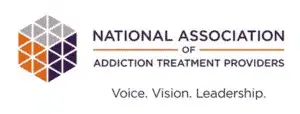Heroin abuse and addiction is a growing concern in the United States. In 2019 alone, 745,000 Americans used heroin, and more than 14,000 died of a heroin overdose, over seven times as many as in 1999.
The increasing number of heroin overdoses means it is vital to recognize the signs of heroin abuse and addiction. The following provides an overview of heroin’s risks, the key symptoms of heroin abuse and ways to find professional treatment for heroin addiction.
What Is Heroin?
Heroin is an illicit opioid drug that is classified as a Schedule I controlled substance, meaning that it has no accepted medical use in the United States. The drug is derived from morphine and comes from the seed pod of poppy plants.
Types of Heroin
Heroin exists in two main forms: white powder and black tar. Although they both contain heroin, these forms have several important differences:
This Season, Give Yourself the Gift of a Fresh Start.
Whether you are struggling with addiction, mental health or both, our expert team is here to guide you every step of the way. Don’t wait— reach out today to take the first step toward taking control of your life.
- White powder heroin: Drug dealers sometimes dilute white powder heroin with ingredients like sugar, starch, powdered milk or quinine. White powder heroin is often purer than black tar heroin, and it is generally snorted or smoked.
- Black tar heroin: This kind of heroin looks like a black, sticky substance or a brownish rock. It is dark in color because of the large number of impurities it contains, which are caused by the production process.
How Is Heroin Used?
Heroin can be injected as well as smoked, snorted or sniffed. Generally, the purer the heroin, the more likely it is to be snorted or smoked. Sometimes, heroin is mixed with stimulants like methamphetamine or cocaine, or it is taken right before or after using these substances. This is referred to as “speedballing.”
Heroin Paraphernalia
If you suspect a loved one might be abusing heroin, it is common to find drug paraphernalia. This term refers to items that a person uses when taking the drug. Common heroin paraphernalia includes:
- Needles or syringes to inject heroin
- Shoelaces or fabric used to “tie off” an arm for injecting heroin
- Tinfoil to heat heroin for smoking
- Small spoons to heat heroin for smoking
- Pipes to smoke heroin
- Cotton balls to remove impurities from liquid heroin
- Plastic pen case or drinking straw to snort or sniff heroin
Why Is Heroin So Addictive?
As a Schedule I controlled substance, heroin is among the drugs that carry the highest risks of addiction, abuse and dependence.
When someone takes heroin, it quickly acts on the brain by binding to opioid receptors. This stimulates the brain’s reward center, causing the release of dopamine — the brain’s feel-good chemical.
The surge of dopamine in the brain drives addiction to heroin, as it reinforces heroin use and makes someone crave more of the drug. Your brain is inherently meant to seek out the things that bring you reward or pleasure. Craving heroin is the brain’s way of trying to keep getting the positive feelings of the drug.
When you take heroin, your brain starts to become used to its presence. The biochemistry of your brain changes because it expects heroin to be present. This phenomenon is called physical dependence. It means that if you suddenly stop using heroin, you will start experiencing withdrawal symptoms as your body struggles to adjust to being suddenly heroin-free.
A psychological addiction to heroin is linked to the toll that drug use takes on your mental health. When you are psychologically addicted to heroin, you may have strong cravings for it and be unable to get your mind off using the drug.
Short-Term Effects of Heroin
Heroin can have a variety of short-term effects immediately after a person uses it. These include:
- Euphoria or a “rush” as soon as the drug is taken
- Sleepiness, which may immediately follow the initial rush
- Pinpoint pupils
- Nausea
- Flushed skin
- Dry mouth
- A heavy feeling in the extremities
- Nausea, which can be dangerous if a person vomits while they are unconscious
- Slowed breathing, which can lead to death in an overdose
Long-Term Effects of Heroin
Heroin has many different long-term effects on your well-being. These include the financial burdens of an expensive addiction and the legal problems from poor decision-making that go alongside an addiction. Your health can also suffer from chronic heroin use in multiple ways, including:
- Poor dental health, including bad teeth and inflammation of the gums
- Chronic constipation
- Cold sweats
- Itchy skin
- A weakened immune system
- Lung damage and respiratory disease, especially if you smoke heroin
- Muscle weakness and partial paralysis
- Reduced libido and long-term impotence in men
- Menstrual problems in women
- Problems achieving orgasm
- Memory loss and cognitive problems
- Depression
- Pustules on the face
- Appetite loss
- Trouble sleeping
According to a survey from The Recovery Village, respondents who used opioids like heroin struggled most with nausea and vomiting (50%), gastrointestinal issues (43%) and depression (42%). One in ten also reported going into a coma due to opioid use, while nearly half (48%) of the respondents had been to the hospital for an opioid-related medical emergency — usually, an overdose.
Heroin Overdose
Heroin overdose is common, and it can also be fatal. It’s difficult to determine how many people overdose and survive each year, but in 2019, there were 14,019 overdose deaths involving heroin in the United States.
When someone overdoses on heroin, they take such a high dose that their breathing and respiratory system slows to the point that they slip into a coma or die. Heroin overdose can occur even if a person takes the drug often without problems. This is because it is hard to know the exact potency of the heroin that is being used. Further, if a person quits heroin for a while and then relapses, they are at high risk of an overdose because their body is no longer used to the drug.
Heroin overdose symptoms include:
- Slow and shallow breathing
- Blue lips or fingernails
- Clammy skin
- Convulsions
- Coma
Drug overdoses can be fatal. If you suspect someone is experiencing an overdose, administer naloxone (Narcan) if you have it available and call 911 immediately. Do NOT be afraid to seek help. If you do not have access to a phone, contact Colorado Poison Center for online assistance.
Understanding Heroin Addiction
When a person is addicted to heroin, they often know that they are struggling with the drug. However, addiction means that a person has a hard time quitting a substance, even though they are suffering ill effects from its use. These effects can be physical, mental, social or even legal.
Addiction causes changes in the brain that distort a person’s behaviors. This can cause cravings, personality changes and problems with judgment and decision-making. It is for these reasons that addiction is not considered a moral failing, but an illness.
Heroin Addiction Rate
Nationally, heroin abuse was fairly consistent in the several years leading up to 2019, with a spike during the COVID-19 epidemic in 2020. According to a survey from The Recovery Village, around 25% of respondents who took opioids used heroin.
As of 2019, 745,000 Americans misused heroin annually, with 50,000 of those being new heroin users. As of 2019, the overall rate of heroin use by age was:
- Up to 0.2% of adolescents aged 12 to 17 years used heroin
- Around 0.3% of young adults aged 18 to 25 years used heroin
- About 0.3% of adults aged 26 years or older used heroin
Heroin overdose deaths in Colorado jumped in 2020 despite stabilizing over the previous few years. However, heroin abuse in Colorado has recently been overshadowed by fentanyl abuse.
Heroin Addiction Demographics
Although previously linked to young people in urban areas, heroin is now a common drug of abuse across multiple demographics. It has been found in rural, suburban and urban areas and is abused by people of all genders, races and ages.
That said, certain factors can put a person at a higher risk of heroin addiction. These include:
- Prescription opioid use leading up to heroin use: Many people who end up on heroin originally started by taking prescription narcotics. If an opioid prescription suddenly ends, a person who wants to remain on opioids may feel they need to rely on street drugs like heroin. Overall, about 4% of people who started with prescription narcotics end up addicted to heroin.
- Using heroin to “come down” from a stimulant high: People who abuse stimulants like cocaine and use heroin to help come down from the stimulant high are at high risk of heroin addiction.
- Taking multiple substances: Those who get high on multiple substances may be more at risk of heroin addiction than those who do not.
Heroin Treatment Options
Although addiction to heroin can seem insurmountable, it is not hopeless. Multiple treatment strategies exist to help a person quit heroin for good. These include:
- Medications: Medication-assisted therapy with methadone and buprenorphine-based products are often used to help people avoid withdrawal symptoms and cravings when recovering from heroin addiction
- Heroin detox: Detox is typically the first step in heroin recovery, and it helps people to cleanse their body and brain of the drug.
- Heroin rehab: In rehab, people explore why they began to rely on heroin and develop new coping strategies to live a heroin-free life.
- Aftercare: Even after heroin rehab is complete, a person must stay focused on their recovery. Aftercare includes participating in support groups like Narcotics Anonymous to help you remain heroin-free.
Find the Help You or Your Loved One Needs
If you or someone you love struggles with heroin use, you do not have to face your addiction alone. The Recovery Village at Palmer Lake is here to help you begin the path to a healthier, heroin-free life.









